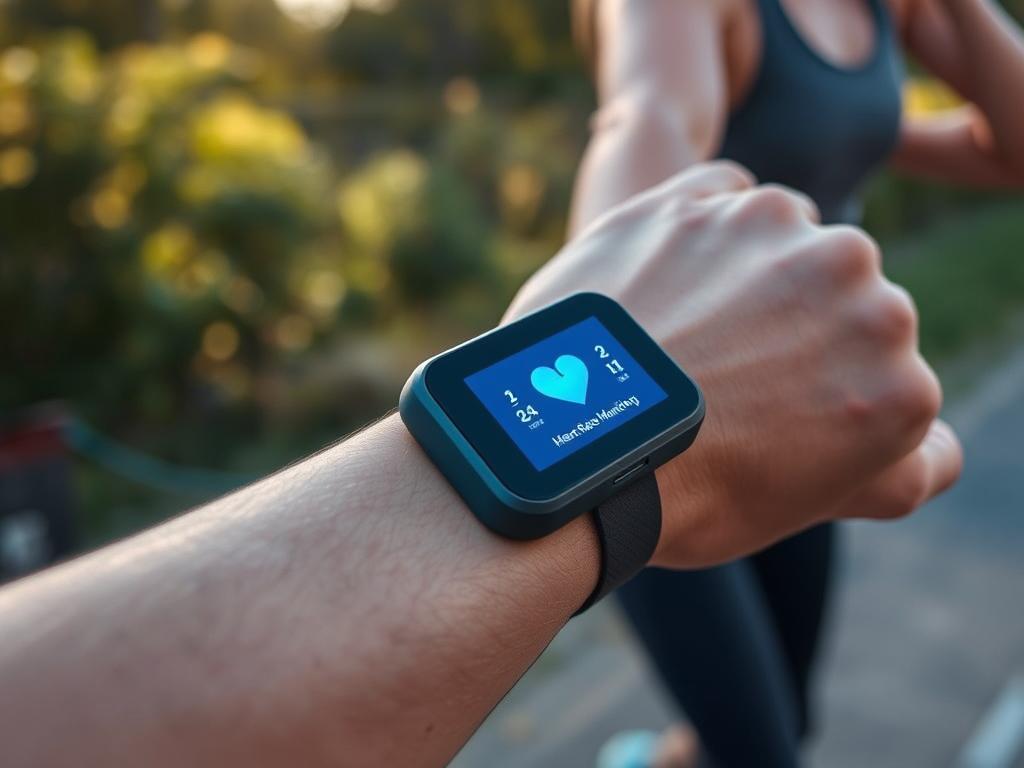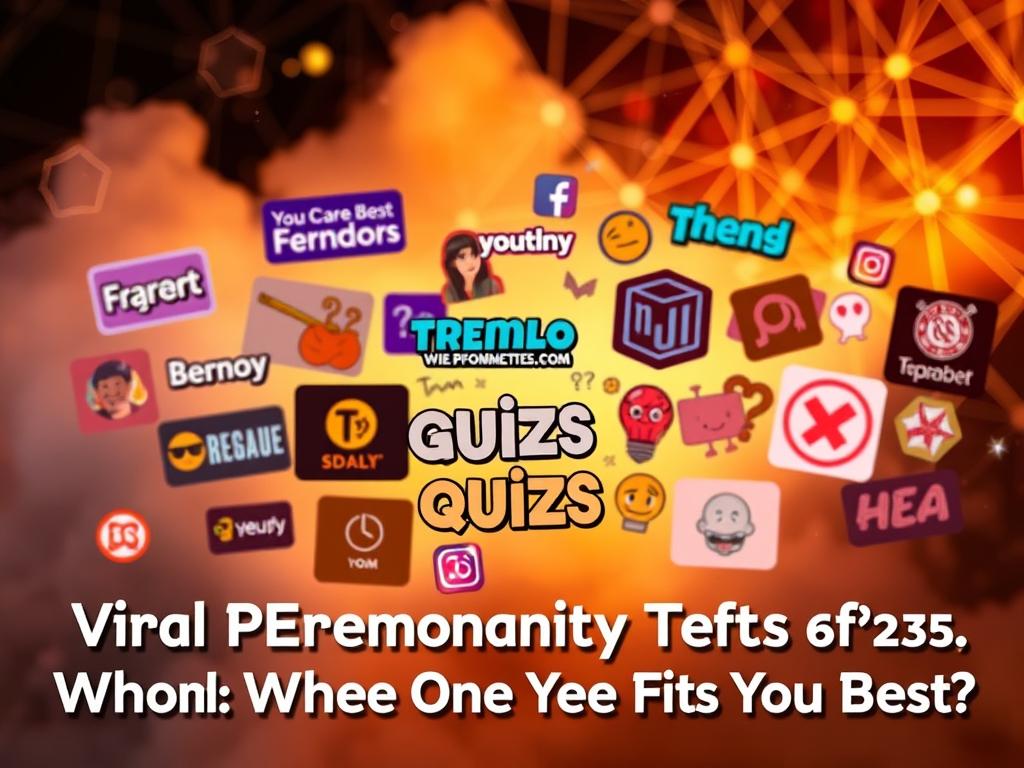Imagine walking into your home and saying a simple command. Your living room lights up warmly. As night falls, the lights softly dim for a cozy evening.
Smart lighting has changed how we light our homes. These systems give us control, save energy, and let us customize. They use LED bulbs, which use less power and last longer.
The Philips Hue is a top smart lighting choice. It can change colors and adjust brightness. Its bulbs are bright and last a long time.
Govee and Nanoleaf are also making a splash. Govee’s bulbs use little power but are very bright. Nanoleaf’s bulbs are even brighter and use less power too.
Looking ahead to 2025, home lighting is getting even better. Technology is improving, and prices are dropping. Are you ready to brighten your home with smart lighting?
Introduction to Smart Lighting Systems
Smart lighting systems are changing home lighting. They mix new tech with basic lighting needs. Homeowners get to control their spaces like never before.
Definition and Benefits
Smart lighting systems are lights that connect to the internet. They let users control them from anywhere. They save energy, offer color and dimming, and work with voice assistants.
- Energy savings of 30% to 60% compared to traditional lighting
- Customizable color options and dimming features
- Remote access for enhanced convenience and security
- Integration with voice assistants for hands-free control
Popular Brands Overview
Many top brands are in the smart lighting market:
- Philips Hue: Known for its wide range of products and ecosystem compatibility
- LIFX: Offers bright, colorful bulbs with easy setup
- Govee: Provides affordable options with unique lighting effects
- TP-Link: Features reliable performance and straightforward app control
As tech advances, these brands keep improving. They’re expected to grow to $75 billion by 2025. Smart lighting is making homes brighter in new ways.
Key Features of Smart Lighting Systems
Smart lighting systems change how we light our homes. They mix energy-saving lights with new tech. This makes our homes more comfy, easy to use, and cheaper to run.
Energy Efficiency
Smart bulbs save a lot of energy. They use up to 75% less power than old bulbs. Systems with the ENERGY STAR label can cut energy use by 80%.
This means big savings on your electric bill. People say they save about 30% on their bills.
Customization Options
Smart lights let you change how bright, what color, and how warm they are. You can make them fit your mood or what you’re doing. This makes people use them more, by 40%.
About half of users like setting their own schedules. This lets lights turn on and off by themselves, fitting your daily life.
Remote Access Capabilities
You can control your lights from anywhere. This lets you change your home’s lights with your phone or voice. It’s like having a magic remote for your lights.
Being able to control lights from afar can save 15% more energy. It stops you from forgetting to turn off lights. Plus, using your location to control lights can save 20-30% more energy.
- Motion sensors reduce energy waste by 35%
- 47% of consumers prefer voice-controlled smart lights
- 60% of users report enhanced home security with smart lighting
Smart lighting systems are a great choice for today’s homes. They save energy, let you customize, and can be controlled from anywhere. These benefits make them a smart choice for anyone wanting to improve their home.
Leading Brands in Smart Lighting
Smart lighting systems have changed how we light our homes. Let’s look at the top brands leading the way in automated lighting.
Philips Hue
Philips Hue is a big name in smart lighting. Their Hub can control up to 50 bulbs. Without the Hub, you can manage 10 bulbs via Bluetooth.
They offer a wide range of products, like the White and Color Ambiance Starter Kit. These bulbs last 25,000 hours and come in packs of two or four.

LIFX
LIFX brings new ideas to outdoor lighting. Their SuperColor Outdoor String Lights last 25,000 hours. These lights work with 2.4GHz Wi-Fi, perfect for your backyard.
LIFX also offers the Mini bulb, with an impressive 200,000-hour lifespan.
Wyze
Wyze offers smart lighting that’s easy on the wallet. The Wyze Bulb lasts 25,000 hours, just like pricier bulbs. Wyze aims to give quality at a lower price, making smart lighting more accessible.
Smart lighting systems vary in price. Standalone bulbs cost from $10 to over $40, and fixtures can be hundreds of dollars. Despite being more expensive than traditional LEDs at first, smart lights have gotten cheaper. They offer features like custom schedules, dynamic effects, and remote control, making our homes brighter and more comfortable.
How Smart Lighting Systems Work
Smart lighting systems make your home brighter and easier to control. They use wireless tech to connect to your Wi-Fi. This lets you change your lights with a smartphone app.
Wireless Technology Overview
Most smart lights use Wi-Fi, Bluetooth, or Zigbee. Wi-Fi bulbs connect directly to the internet. Zigbee makes signals stronger and more reliable. Bluetooth lights need a hub to work online.
Over 90% of smart lights work with Amazon Echo or Google Home. This makes them easy to use with other smart devices.
Integration with Smart Home Devices
Smart lights work well with other smart devices. You can control them with voice commands or adjust them based on sensor data. This lets you set up cool automations, like lights turning on when you come home.
You can also make your lights change color or brightness to fit your mood. Set them to wake you up with a sunrise feel or adjust them for your day. The smart lighting market is growing fast, expected to hit $20 billion by 2025.
Choosing the Right Smart Lighting System
Finding the perfect Smart Lighting System for your home is important. It can change your living space, save energy, and make life easier.
Matching System to Home Size
The size of your home matters when choosing smart bulbs. A Philips Hue Bridge can handle up to 50 Hue lights, perfect for most homes. But, bigger homes might need more bridges or a stronger system for control.
Budget Considerations
Smart lighting systems cost differently. Smart light switches start at $53, and smart chandeliers can be over $1,500. Most people spend $100 to $300 for their first setup. These systems can cut utility bills by up to 25%, saving money over time.
Aesthetic Preferences and Design
Smart lighting comes in many styles, from color-changing bulbs to outdoor lights. About 45% like systems that change colors. Think about how these lights will look in your home. Some systems offer over 16 million color choices for a unique look.
- Think about the lighting zones you want to create
- Consider voice control compatibility for added convenience
- Look for systems that offer both general and accent lighting options
By thinking about these points, you can find a Smart Lighting System that meets your needs. It will also make your home look and feel better.
Installation Process for Smart Lighting Systems
Setting up smart lighting in your home is exciting. It’s a step towards making your living space modern. The installation process depends on the system you choose and your DIY skills.
DIY Installation vs. Professional Help
Many smart lighting systems are easy to install yourself. Some smart bulbs have Bluetooth, so you can set them up without a hub. Smart LED bulbs start at just $5, making them affordable for beginners.
If DIY isn’t your thing, getting professional help is a good option. It’s best for complex systems or if you’re adding smart lighting to other devices in your home.
Tools Needed for Installation
For most smart light installations, you’ll need:
- Screwdrivers
- Pliers
- Wire strippers
- Voltage tester

Check if your lights are compatible before you start. About 30% of installations need special fixtures. Also, make sure your Wi-Fi is strong, especially with more than 15 bulbs.
Smart bulbs might cost more upfront, but they save a lot on energy. They can cut energy use by up to 75% compared to old lights. This makes them a smart choice for your home.
Smart Lighting Controls and Interfaces
IoT lighting makes controlling your home easier. Smart lighting systems come with different interfaces. This makes managing your automated lighting simple.
Smartphone Apps
Smartphone apps are key for controlling smart lighting. They let you change brightness, set schedules, and even colors. For example, Control4 Smart Lighting lets you dim and turn off lights from afar.
This app can also help save energy. It keeps lights at 10% brightness for nighttime use.
Voice Control Compatibility
Voice control makes IoT lighting hands-free. Many systems work with Amazon Alexa, Apple HomeKit, and Google Assistant. You can turn lights on or off, adjust brightness, or start scenes with voice commands.
Physical Switch Options
Some prefer traditional controls. Smart lighting systems often have physical switches. Control4 Keypads offer custom engraving and LED backlit indicators.
These switches give instant feedback on light status. Smart switches can control one fixture from many places. This adds flexibility to your lighting setup.
Whether you use apps, voice commands, or physical switches, smart lighting is convenient. Control4’s Mockupancy™ feature simulates occupancy. It turns lights on and off at set times. This improves both convenience and home security.
Energy Savings with Smart Lighting
Smart Lighting Systems save a lot of energy compared to old lighting. They use LED technology, which uses 75% less electricity than old bulbs for the same light.
Comparing Smart and Traditional Lighting
The difference between smart and old lighting is big:
- LED bulbs last 15,000 to 50,000 hours, while old bulbs last 1,000 to 2,000 hours
- Smart lighting can cut energy use by up to 90%
- Smart systems can lower lighting costs by 30% to 70%
Long-term Cost Benefits
Smart lighting saves money over time. Smart lighting can lead to a 15-20% drop in energy use. Even though it costs more at first, it saves a lot of money later.
Smart lighting helps more than just homes. The U.S. Department of Energy says LED lighting could save 569 terawatt-hours of electricity by 2035. This would save over $30 billion in energy costs. It’s good for both your wallet and the planet.
Security Features of Smart Lighting Systems
Smart lighting systems have changed home lighting tech. They offer convenience and better security. These IoT lighting solutions protect your home well, making them great for security.
Motion Detection and Alerts
Motion detection is a key security feature of smart lighting. It lights up areas when it sees movement, which might scare off intruders. Studies show homes with smart lights have up to 30% fewer break-ins.
Many systems send alerts to your phone right away. This lets you act fast if something looks off.

Remote Monitoring Capabilities
Smart lighting lets you watch your home from anywhere. You can see your home’s lighting status through a smartphone app. This lets you make it seem like someone is, which helps prevent burglaries.
Over 40% of break-ins could be stopped by smart lighting. It makes your home look occupied.
These features work better with other smart home devices. For example, geo-fencing turns on lights as you get close to home. This makes your home safer.
62% of homeowners feel safer with smart lighting. It’s not just convenient; it’s a strong way to protect your home.
Popular Use Cases for Smart Lighting
Smart lighting systems have changed how we light our homes. They offer many uses that make our homes better and save energy. Now, 21% of US homes with internet own smart lighting.
Enhancing Home Ambiance
Smart bulbs change the feel of our homes easily. They come in over 16 million colors, making any mood possible. You can change the light’s brightness and color for any activity or time.
Think of soft, warm lights for cozy nights or bright colors for parties. This lets you control your lighting, making you happier. Studies show people are up to 80% happier with their lighting.
Energy Savings in Different Rooms
Smart lighting saves energy in every room. It can cut energy use by up to 50% by adjusting brightness and timing. In bedrooms, lights get brighter slowly to wake you up.
Kitchen lights change with the sun. Living room lights dim for movie nights. These changes save energy and make our homes more comfortable.
Smart lighting might cost more upfront, with bulbs up to 10 times pricier than regular LEDs. But, the long-term savings and benefits are worth it. As tech gets better, we’ll see even more cool uses for smart lighting.
Future Trends in Smart Lighting Technology
The smart lighting industry is set for big growth. It’s expected to jump from $9.10 billion in 2014 to $51.50 billion by 2025. This growth rate is 17.1% each year.
Advancements in Artificial Intelligence
Smart Lighting Systems are getting smarter with AI. Soon, they will change based on what you like and when you’re home. They might even adjust to the light outside.
Sustainable Lighting Solutions
Energy-saving lights are key. LED bulbs use up to 80% less power than old bulbs. Smart streetlights could save up to 40% of energy with sensors.
Solar lights are becoming popular too. They’re good for the planet and save money. This trend is making smart lights better for the environment.
Human-centric lighting is also on the rise. It changes color and brightness to match your day. This tech aims to boost your mood and productivity.
Conclusion: The Future of Home Lighting
Smart lighting systems are changing home lighting tech. They offer convenience, save energy, and boost security. These systems are getting more popular and easy for homeowners to get.
Summary of Key Points
The smart lighting market is expected to hit $130 billion by 2025. Home use is growing fast, at 22% each year. These systems can cut energy use by 80%, saving homeowners about $200 a year.
Smart LED lights use 75% less energy than old bulbs. Yet, they shine just as bright. This makes them a smart choice for saving money and energy.
Encouragement for Adoption
Now, 60% of homeowners want to add smart lighting to their smart homes. These systems let you control lights with your voice and from anywhere. They make homes more comfortable and secure.
Smart lighting is becoming key in modern homes. The future of home lighting looks bright and efficient. By using this tech, homeowners can enjoy a better, more connected living space.
FAQ
Q: What are smart lighting systems?
A: Smart lighting systems are high-tech lighting that connects to the internet. You can control them with your phone, voice, or set schedules. They save energy and let you customize your lighting.
Q: How do smart lighting systems save energy?
A: They use LED bulbs, which use less energy than old bulbs. They also turn off automatically, dim, and follow schedules. This cuts down energy use a lot.
Q: Which brands are leading in the smart lighting market?
A: Top brands include Philips Hue, LIFX, and Wyze. They offer different features and products for various needs.
Q: Can smart lighting systems integrate with other smart home devices?
A: Yes, many smart lights work with Amazon Alexa, Google Home, and Apple HomeKit. This makes your home smarter.
Q: Do I need a hub for my smart lighting system?
A: It depends on the system. Some need a hub, while others connect directly to Wi-Fi. Hubs add features and improve connections.
Q: How difficult is it to install a smart lighting system?
A: Installation is easy for many systems. You just replace bulbs or switches. But, some setups might need a pro.
Q: Can smart lighting systems improve home security?
A: Yes, they can. They have motion detection, remote monitoring, and make it look like someone’s home when you’re not.
Q: What are the main ways to control smart lighting?
A: You can control them with apps, voice commands, or physical controls. Many systems offer all these options.
Q: How much can I expect to save on energy bills with smart lighting?
A: Savings vary by usage and rates. But, LED bulbs use up to 90% less energy than old bulbs. This can lead to big savings.
Q: Are there privacy concerns with smart lighting systems?
A: Yes, there are privacy worries. But, good brands have strong security. Use strong passwords and update your system’s software.
Q: What future developments can we expect in smart lighting?
A: Expect better AI for smarter lighting, more energy savings, and health-focused lighting. This lighting will adjust to your body’s rhythms.
Source Links
- https://www.techradar.com/news/best-smart-lighting – The best smart lights 2025: light up your life with smart bulbs and lamps
- https://www.pcmag.com/picks/the-best-smart-light-bulbs – The Best Smart LED Light Bulbs for 2025
- https://www.reviewed.com/smarthome/best-right-now/best-smart-lights – The Best Smart Lights of 2025
- https://blog.kreon.com/smart-lighting-benefits – Smart lighting: what is it and what are the benefits?
- https://www.techradar.com/home/smart-home/a-beginners-guide-to-smart-lighting-everything-you-need-to-know – A beginner’s guide to smart lighting: everything you need to know
- https://www.screwfix.com/guides/smart-homes/smart-lighting-guide – Guide to Smart Lighting Systems | Smart Homes
- https://www.energystar.gov/products/smart_home_tips/smart_lighting – Smart Lighting
- https://dominionlighting.com/smart-lighting-systems/ – Top Benefits of Smart Lighting for Homes & Businesses
- https://www.crompton.co.in/blogs/lights-guide/what-is-smart-lighting – What is Smart Lighting Technology? Features, Benefits & Working | Crompton
- https://www.androidpolice.com/best-smart-lights/ – Best smart lights in 2025
- https://www.tomsguide.com/us/best-smart-lights,review-6194.html – The best smart lights in 2025
- https://www.nytimes.com/wirecutter/reviews/best-smart-led-light-bulbs/ – The Best Smart LED Light Bulbs
- https://blog.lightbulbs-direct.com/smart-lighting-guide/ – Everything you need to know about Smart Lighting | Lightbulbs Direct Blog
- https://blog.mipimworld.com/guide-proptech/proptech-smart-lighting-systems-energy-efficiency-responsiveness/ – Smart Lighting Systems: Energy-Efficient and Responsive – MIPIM World Blog
- https://www.smlease.com/entries/automation/what-is-smart-lighting-technology/ – What is Smart Lighting Technology it’s types and How does it Work?
- https://makeitright.ca/holmes-advice/design-renovation-inspiration/how-to-choose-smart-lighting-solutions/ – How To Choose Smart Lighting For Your Home – Make It Right®
- https://www.build.com/smart-lighting-buying-guide/a26337 – Smart Lighting Buying Guide
- https://bostonautomations.com/smart-lighting-101-a-step-by-step-guide-to-basic-intelligent-lighting-setups-for-beginners/ – Smart Lighting 101: A Step-by-Step Guide to Basic Intelligent Lighting
- https://www.theverge.com/23156554/smart-bulbs-switch-lighting-guide-how-to – How to choose between smart lights and smart switches
- https://www.lumarysmart.com/blogs/news-and-blogs/how-to-install-smart-lights-in-your-home – How to Install Smart Lights in Your Home
- https://www.control4.com/solutions/smart-lighting/ – Smart Lighting Control Systems | Control4 Home Automation
- https://www.legrand.us/lighting-controls-and-systems/smart-lighting/c/lgnd050900?srsltid=AfmBOorI4Z6D0cZYbcj0_tNMABUTlT3Xw7v9CYNXO1pSqAJMhkNq8sXj – Smart Lighting | Lighting Controls and Systems
- https://www.facilitiesnet.com/lighting/article/Smart-Lighting-Offers-Major-Benefits–20134 – Smart Lighting Offers Major Benefits
- https://smartlighting.ieee.org/topics-ai/sml2-clean-smart-lighting-and-sustainable-development – SML2-Clean Smart Lighting and Sustainable Development – IEEE Smart Lighting
- https://www.lumarysmart.com/blogs/news-and-blogs/smart-lighting-guide-energy-savings – Slash Your Bills with Smart Lights: Ultimate Guide to Savings!
- https://www.fullspectrumtg.com/smart-lighting-for-enhanced-home-security-2/ – Smart Lighting For Enhanced Home Security
- https://www.goldmedalindia.com/blog/what-is-smart-lighting/ – What is smart lighting? A complete guide
- https://www.parksassociates.com/blog/article/smart-lighting–enhancing-smart-home-use-cases – Smart Lighting: Enhancing Smart Home Use Cases
- https://1nce.com/en-ap/resources/iot-knowledge-base/iot-solutions/iot-use-cases/smart-lighting-iot-sim-cards – Smart Lighting in the IoT-enabled City Infrastructure | 1NCE
- https://blog.velosiot.com/what-are-the-top-3-benefits-of-smart-lighting – What are the Top 3 Benefits of Smart Lighting?
- https://www.led-professional.com/resources-1/articles/smart-lighting-market-and-technology-trends – Smart Lighting Market and Technology Trends
- https://www.linkedin.com/pulse/illuminating-future-smart-lighting-trends-so-far-2024-lylux-group-pfzif – Illuminating the Future: Smart Lighting Trends so far in 2024
- https://www.adayoled.com/news/the-future-of-led-lighting-trends-to-watch-in-2024.html – LED lighting trends 2024, Smart LED lighting systems, Energy-efficient LED lights, Sustainable LED lighting, Human-centric lighting (HCL)
- https://colorbitlights.com/blogs/news/the-future-of-home-lighting-exploring-smart-technology?srsltid=AfmBOooSCtQo9Zoxfh_KcntZBL_osW0GRUakRnwyLXESBu4mjGYo6kLf – The Future of Home Lighting: Exploring Smart Technology
- https://getwiredtec.com/get-wired-tec-blogs/item/the-future-of-lighting-smart-led-systems-for-a-connected-home – The Future of Connected Home Lighting





